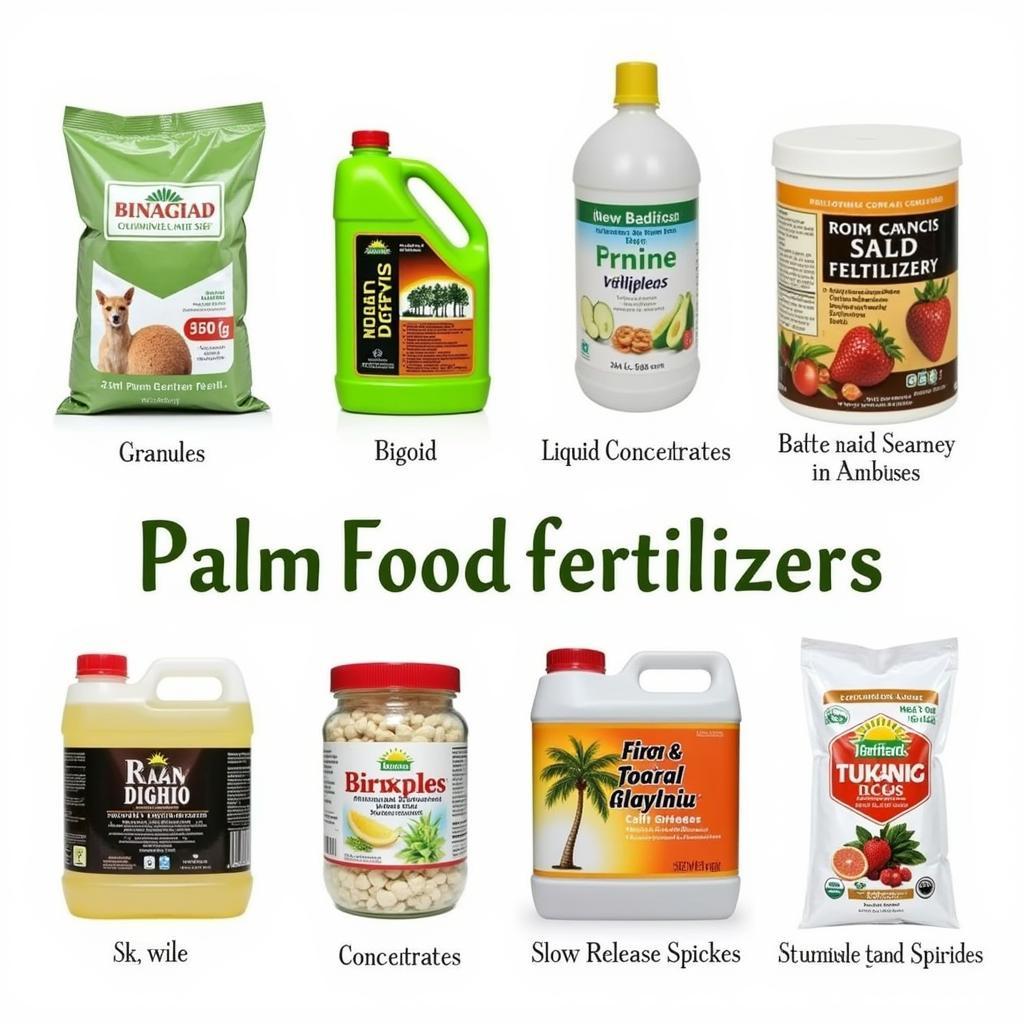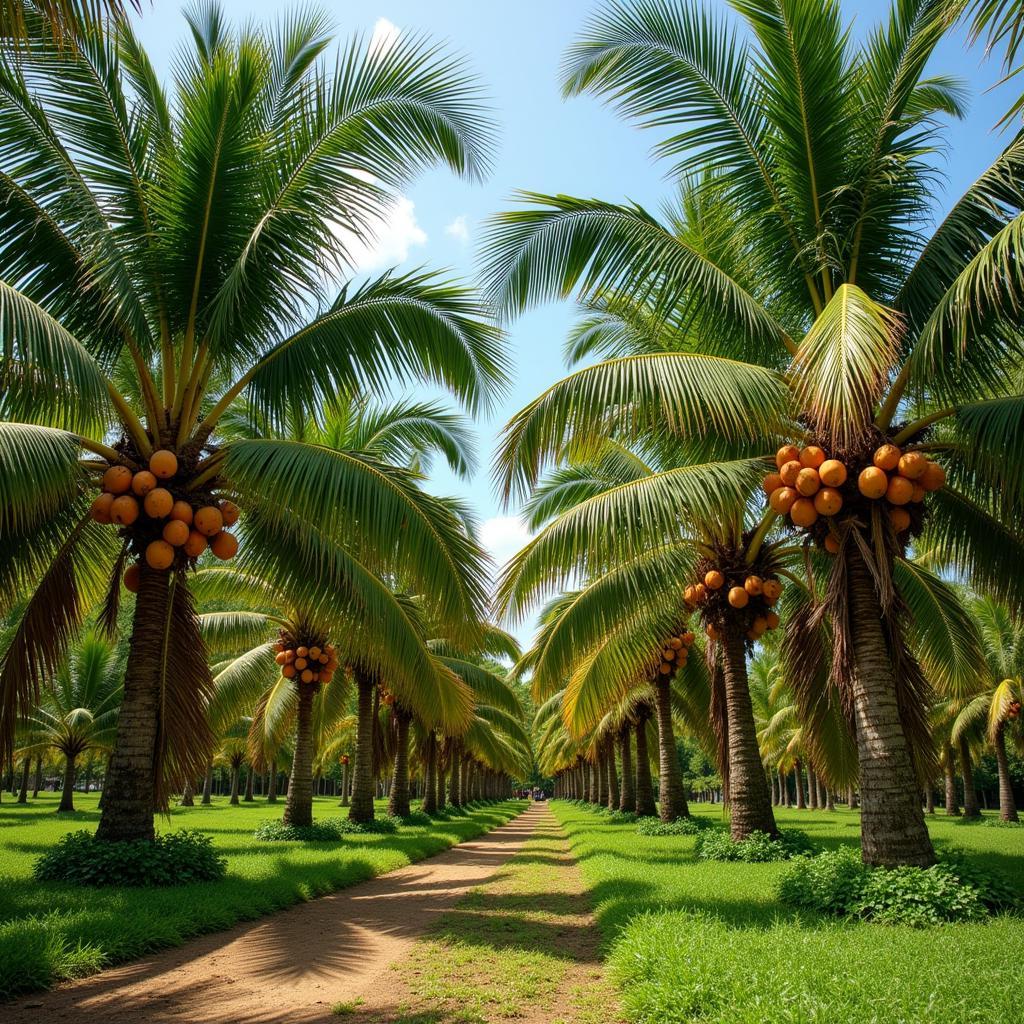Palm Food Fertilizer is a type of fertilizer that is specifically designed to provide the nutrients that palm trees need to thrive. Palm trees are a valuable crop in many parts of the world, and they require a specific balance of nutrients to produce fruit, oil, and other products. Using the right palm food fertilizer can help to ensure that your palm trees are healthy and productive.
Understanding Palm Tree Nutrition
Just like any other plant, palm trees require a balanced diet of essential nutrients for optimal growth and fruit production. These nutrients can be broadly classified into macronutrients and micronutrients.
- Macronutrients: These are required in larger quantities and include nitrogen (N), phosphorus (P), and potassium (K). Nitrogen is crucial for leaf growth, phosphorus supports root development and flowering, while potassium contributes to overall plant health and fruit quality.
- Micronutrients: Needed in smaller amounts, micronutrients are equally important. These include magnesium (Mg), manganese (Mn), iron (Fe), and others. They play vital roles in chlorophyll production, enzyme activity, and disease resistance.
A deficiency in any of these nutrients can lead to various problems, affecting the palm tree’s growth, fruit yield, and susceptibility to pests and diseases.
Choosing the Right Palm Food Fertilizer
Selecting the appropriate palm food fertilizer is crucial for ensuring the health and productivity of your palm trees. Here are some factors to consider:
- Nutrient Ratio: Look for a fertilizer with a balanced NPK ratio, such as 8-2-12 or 12-4-12, which is specifically formulated for palm trees. These ratios ensure an adequate supply of the essential macronutrients.
- Micronutrient Content: Opt for a fertilizer that also includes essential micronutrients. This will prevent deficiencies and promote overall plant health.
- Slow-Release Formula: Choose a slow-release fertilizer to provide a continuous supply of nutrients to your palm trees over an extended period. This reduces the frequency of application and ensures a consistent nutrient supply.
- Soil Type: Consider the type of soil in your area. Sandy soils may require more frequent fertilization than clay soils due to their lower nutrient retention capacity.
 Different types of palm food fertilizer
Different types of palm food fertilizer
Applying Palm Food Fertilizer
Applying the right amount of fertilizer at the correct time is essential for optimal results. Here’s a step-by-step guide:
- Determine the Fertilizer Rate: Refer to the manufacturer’s instructions on the fertilizer packaging to determine the recommended application rate for your palm tree’s size and age.
- Prepare the Application Area: Clear any debris or weeds around the base of the palm tree to allow the fertilizer to reach the roots effectively.
- Apply the Fertilizer Evenly: Sprinkle the fertilizer granules evenly around the tree’s canopy, extending slightly beyond the drip line (the area under the outermost leaves where rainwater naturally falls).
- Water Deeply: After applying the fertilizer, water the area thoroughly to help dissolve the nutrients and facilitate their absorption by the roots.
- Frequency of Application: Depending on the type of fertilizer you choose (slow-release or granular), you may need to fertilize your palm trees every 2-3 months during the growing season (spring and summer).
Benefits of Using Palm Food Fertilizer
Using a specifically formulated palm food fertilizer offers numerous benefits for your palm trees, including:
- Enhanced Growth: Provides the essential nutrients for robust leaf, root, and overall tree growth.
- Increased Fruit Production: Promotes flowering and fruit development, leading to a higher yield.
- Improved Fruit Quality: Contributes to better fruit size, color, and taste.
- Increased Resistance to Pests and Diseases: Healthy and well-nourished palm trees are better equipped to withstand pest infestations and diseases.
- Enhanced Tolerance to Environmental Stress: Helps palm trees cope with stress factors such as drought, heat, and cold.
Frequently Asked Questions about Palm Food Fertilizer
Q1: Can I use regular fertilizer for my palm trees?
A1: While you can use regular fertilizers, it’s not recommended. Palm trees have specific nutrient requirements that are best met by using a fertilizer specially formulated for them.
Q2: How often should I fertilize my palm trees?
A2: The frequency of fertilization depends on the type of fertilizer you’re using and your palm tree’s needs. Generally, fertilizing every 2-3 months during the growing season is sufficient.
Q3: What are the signs of nutrient deficiency in palm trees?
A3: Common signs include stunted growth, yellowing or browning of leaves, and poor fruit production.
Q4: Can I over-fertilize my palm trees?
A4: Yes, over-fertilization can be harmful. It’s crucial to follow the recommended application rates on the fertilizer packaging.
Q5: Where can I buy palm food fertilizer?
A5: Palm food fertilizer is readily available at most garden centers, nurseries, and online retailers.
 Healthy palm tree grove with coconuts
Healthy palm tree grove with coconuts
Need Help with Your Palm Trees?
For personalized advice on choosing and using palm food fertilizer, contact our team at Mina Cones Food. Call us at 02437655121, email us at [email protected], or visit us at 3PGH+8R9, ĐT70A, thôn Trung, Bắc Từ Liêm, Hà Nội, Việt Nam. We are available 24/7 to assist you. You can also check out our other blog posts for more gardening tips and information.